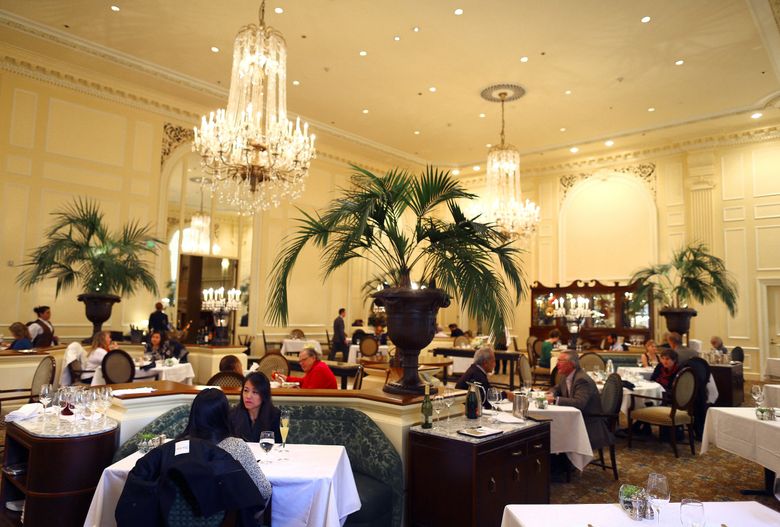Savor Genuine Eastern Cuisine With a Pan-Asian Twist for a Cooking Experience
Embarking on a cooking journey through genuine Eastern cuisine, boosted with a Pan-Asian twist, supplies an unique possibility to check out the rich tapestry of flavors that specify the area's diverse cooking practices. This experience invites you to relish the exquisite equilibrium of tastes-- pleasant, salty, spicy, and sour-- harmonized by aromatic natural herbs and seasonings. Picture the cutting-edge blend of Thai curry and ramen or the unanticipated joy of sushi burritos. As you contemplate these luring meals, consider the social stories and historic impacts that shape them, each bite using a tale waiting to be found.

Checking Out Pan-Asian Tastes
In the world of worldwide gastronomy, Pan-Asian food sticks out for its impressive diversity and the unified interaction of tastes from different Eastern cultures. This cooking technique commemorates the abundant traditions and one-of-a-kind components found across the continent, creating a tapestry of preferences that is both intriguing and rewarding. Secret to Pan-Asian food is its capability to balance contrasting tastes-- sweet, salty, spicy, and sour-- while highlighting the freshness and high quality of each ingredient.
From the umami-rich soy sauce of Japan to the fiery chili peppers of Thailand, Pan-Asian cuisine uses an extensive combination of tastes. These components are frequently combined in creative ways, improving meals with layers of complexity. As an example, using fragrant herbs such as lemongrass and cilantro, usual in Vietnamese and Thai food, includes a rejuvenating brightness to meals, while the incorporation of coconut milk delivers a creamy, rich structure.
The focus on fresh produce and fragrant flavors makes certain that each meal is not just a feast for the taste but additionally for the senses. Pan-Asian food invites restaurants to start a cooking trip, exploring the huge and varied landscapes of Eastern gastronomy with every bite.
Fusion Meals to Attempt
While Pan-Asian cuisine is celebrated for its traditional tastes, the modern-day culinary landscape is increasingly embracing blend recipes that blend these traditional aspects with impacts from various other regions. This cutting-edge technique not only honors the abundant heritage of Oriental culinary arts yet additionally presents novel preference experiences that interest modern tastes.
An archetype of such a fusion recipe is the Korean-Mexican taco, where marinaded bulgogi beef is covered in a cozy tortilla, covered with kimchi and a spicy gochujang-infused salsa. This mix weds the bold, full-flavored tastes of Korea with the vivid, fresh elements of Mexican food. Likewise, sushi burritos have actually obtained popularity, amalgamating the fragile artistry of Japanese sushi with the hearty, hand-held ease of a burrito, usually featuring blend components like tempura shrimp and avocado with a drizzle of wasabi mayo.
An additional noteworthy meal is Thai curry ramen, which instills the luscious, aromatic seasonings of Thai curry right into the comforting brew of traditional Japanese ramen, producing an unified blend that entices the senses. These fusion meals extend past mere novelty; they stand for a cooking dialogue in between cultures, motivating expedition and technology on the planet of Pan-Asian cuisine.
Essential Components and Spices
To absolutely value Pan-Asian cuisine, one have to comprehend the essential active ingredients and flavors that create its foundation. This diverse cooking style attracts from a rich tapestry of Asian practices, employing an unified mix of flavors and textures. Secret active ingredients include soy sauce, fish sauce, and oyster sauce, which impart a full-flavored umami deepness important to Oriental meals. Complementary to these are rice vinegar and mirin, providing a delicate acidity and sweet taste.
Fragrant components are essential, with garlic, lemongrass, and ginger being ubiquitous across numerous read the full info here Pan-Asian recipes. These components offer a great smelling base that improves the intricacy of tastes. Seasonings such as star anise, cardamom, and cinnamon introduce warmth and personality, echoing impacts from areas like China and India.

Cooking Strategies and Tips
Understanding the art of Pan-Asian food calls for knowledge with its distinct food preparation methods, each adding to the lively tapestry of tastes this cooking custom is commemorated for. Central to these techniques is the stir-fry, a rapid food preparation method that protects the nutritional honesty and vibrant colors of ingredients. Utilizing a frying pan, the stir-fry approach permits for even heat distribution, essential for achieving the characteristic structure and flavor balance of Pan-Asian dishes.
An additional basic method is steaming, especially common in Chinese cuisine. This gentle method maintains the natural tastes and nutrients of components, making it perfect for seafood and vegetables. Dumplings, a precious staple, commonly benefit from steaming, leading to soft, delicious textures.
Barbecuing, likewise essential, gives great smoky midsts to recipes such as Oriental bulgogi or Japanese yakitori (asian fusion restaurant). This strategy typically entails marinating active ingredients, allowing flavors to penetrate deeply before food preparation over an open flame or warm plate
Last but not least, grasping the art of stabilizing flavors-- sweet, sour, salted, bitter, and umami-- is important. Appropriately layering these elements can elevate a recipe from average to amazing, supplying a facility and pleasing cooking experience that embodies the significance of Pan-Asian food.
Eating Experiences Worldwide
Throughout the world, Pan-Asian cuisine supplies an unparalleled dining experience, celebrated for its abundant tapestry of tastes and dynamic presentations. This cooking sensation has gone beyond cultural limits, recording the hearts and tastes buds of food lovers worldwide. In multicultural cities like New York, London, and Sydney, Pan-Asian dining establishments function as melting pots where culinary traditions from Thailand, Japan, China, and past converge, providing diners with an eclectic mix of meals that highlight the area's variety.
The worldwide appeal of Pan-Asian cuisine exists in its capability to use both credibility and advancement. Cooks masterfully marry standard active ingredients such as lemongrass, soy sauce, and miso with contemporary strategies, resulting in recipes that are both refreshingly new and familiar. This fusion enables diners to embark on a cooking trip that respects heritage while welcoming modernity.
Furthermore, dining experiences are boosted with thoughtfully developed atmospheres that show the principles of Pan-Asian aesthetics. From minimal Japanese-inspired insides to lively Thai-themed areas, each dining establishment supplies an unique ambiance that matches the culinary offerings. As an outcome, customers are not just consuming a dish but partaking in a social experience, making Pan-Asian dining an absolutely global phenomenon.
Verdict
The exploration of Pan-Asian food supplies an extensive understanding of the intricate interplay of tastes and cooking practices across Asia. By welcoming combination recipes such as Thai curry ramen and sushi burritos, the cooking trip not only highlights the adaptability of conventional ingredients however additionally showcases ingenious modern strategies. This gastronomic adventure, enhanced by cooking techniques and crucial flavors, supplies an unique possibility to appreciate the multiculturalism and cooking click here for info creativity that specify Pan-Asian food on a global scale.
Getting started on a culinary journey with authentic Asian food, boosted with a Pan-Asian twist, supplies an one-of-a-kind opportunity to explore the abundant tapestry of tastes that define the area's diverse culinary traditions.In the realm of international gastronomy, Pan-Asian food stands out for its remarkable diversity and the harmonious interplay of flavors from numerous Asian cultures. Trick to Pan-Asian have a peek at this website food is its capacity to balance different tastes-- sweet, salted, spicy, and sour-- while highlighting the freshness and quality of each active ingredient.
